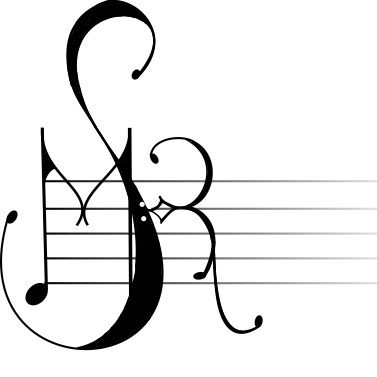
Last month, several SMR members attended the Annual Meeting of the Society for Ethnomusicology, held in Albuquerque, NM. Four of these—Conner Singh VanderBeek, Richard Smith, Casper Chan, and James McNally—presented papers (see abstracts below), three of these on a single panel that they organized, entitled New Methodologies in the Age of Social Media: Identities, Celebrity, and Subculture. Congratulations, all!
photo credit: visitalbuquerque.org
My Intimately Unknown Friend: DJ Khaled and the Indistinction Between Online and Real Selves (Conner Singh VanderBeek)
Centering on the publicly-aired birth of record mogul DJ Khaled’s son, Asahd Tuck Khaled, in 2016, this paper considers what, in the age of social media, constitutes the ethnographic field. Millions watched as Khaled soundtracked his wife’s labor on his Snapchat account, cycling between Rastafarian reggae and his own music, and at one point playing a Muslim call to prayer. It is in conversation with this remarkably intimate moment that I propose a series of questions for ethnomusicologists to consider: how has social media, in both its integrations in our daily lives and in how we present ourselves, rewritten the landscapes of field research? Beyond YouTube - a treasure trove of archival material for scholars and people alike - are the frontiers of Instagram and Snapchat: spaces in which we can get to know someone without ever having to meet them. As ethnographers, what is our relationship to these private and intimate, yet distant, spaces that we can view remotely? Drawing on Ellis Cashmore’s work on celebrity (2006) and on ‘i’ek’s writings on capitalism as the production of desire (2001), this paper posits that social media produces new potentials for fieldwork. Through an examination of the modes of self-presentation and curation that are inherent to social media, I will analyze the interstitial space occupied by social media and music between augmented reality technology and a Baudrillardian sense of hyperreality. The result is the potential for a new reality, full of music and theatricality and celebrity, capable of permeating the mundane.
“Now Sing It with “Chutzpah”: Glocalized Tel Avivi Music, YouTube, and State-Sponsored Queer Identity (Richard Smith)
Dubbed “The Gay Capital of the Middle East,” Tel Aviv, Israel is home physically and virtually to a thriving queer music scene functioning both as a local representation of queerness and state-sponsored touristic advertising. The internet allows music depicting notions of a global queer to be imbued with local flavor and vice-versa, via YouTube-mediation, rendering distinction between the two ineffective. Yet, by making ethnographic room for the very medium by which “glocalization” occurs, I argue that we are afforded unique insight into the ethnomusicological issues of music and reception, fandom, and identity expression in the digital age. I center on queerness in this paper as it is a unique process of self-reflection and critique that innately rejects, but is in part birthed by hegemony (Foucault, 1975). The decolonization of queer enquiry on the part of American scholarship (Knopp 2003; Oswin 2006; Puar 2002, 2003) has routinely situated “global” queer subjectivities as diffusions of American sensibility merely purporting misguided conceptions of cultural hegemonies and flow. Although glocalization depends almost entirely on the circulation of offline expressions via the internet, current analytical models do not allow for disparities between online and offline performances, further complicating how they function. My paper treats YouTube neither as an ending point of research, nor one that is purely archival, documenting the entirety of its users’ thoughts. Rather, in identifying YouTube’s functional role in the case of Tel Avivi queer music, I reveal one evolution of how individual, collective, and national communities actively construct queer, musical identities.
Internet Memes but Explained by Ethnomusicology?: Decoding Music-Making in the YouTube Meme Subculture (Casper Chan)
The current Internet meme subculture (2015 onwards), beneath its surface value of absurdist humor and witty commentary on recent events, entails much more. An ethnomusicological approach to interpreting musical memes brings to light the collective innovations in modes of music-making and appreciation, musical aesthetics, and even “musical instruments,” all of which are made possible by Internet culture and technology. This paper examines the YouTube ‘But’ memes that took shape in 2016 - a large group of humorous videos that involve song covers and video editing, and investigates how music-videos are painstakingly reworked by following arbitrary rules, how songs are reduced to rhythmic/melodic semblances and performed with a coffee stirrer on a table edge, how musical exchanges between “producer” and “consumer” warrant at once technical competence and incompetence, and how memetic “canons” are collectively constructed and reinforced. Memes are symbols, ideas, or practices that primarily carry humor, sarcasm, and reference to daily life. They are apt to be transmitted, re-used, appropriated, combined, and meta-commented, and they have surfaced as a significant mode of entertainment and cultural exchange on the Internet over the past decade. While music has played important, even indispensable roles in memes, the YouTube ‘But’ memes re-define it entirely. Such remixes on the Smash Mouth song “All Star” as “All Star but Every Word Is in Alphabetical Order” and “All Star but It’s Played on Two Calculators’ exemplify not only Internet creativity/absurdity, but the under-theorized mechanism in which musical values and practices are negotiated collectively in meme-subcultural spheres.
Sampling the City: Field Recording as Resistant Creative Practice in São Paulo, Brazil (James McNally)
This paper investigates the ways in which individuals employ field recording as a means of interrogating and confronting urban experience, space, and sound. In order to address this phenomenon, I examine the work of the São Paulo-based sound artist Renata Roman. Roman uses field recording as a primary creative technique and is the founder of the collaborative online project São Paulo SoundMap, which solicits field recordings of the city’s different neighborhoods from individuals across the city. Incorporating data from participant-observation and interviews with Roman, the paper argues for understanding techniques such as field recording and sound mapping as critical means for individuals to respond to marginal urban experiences and reconfigure urban space and sound. As a case study, I examine Roman’s 2015 electronic music work “Sampa,” which incorporates collaborative field recordings made with recent immigrants to São Paulo from Bolivia and Haiti in order to comment on entrenched xenophobia and racism in the Brazilian public sphere. I theorize field recording as a form of everyday resistance (de Certeau 1984:97-98) with the potential to challenge the hegemony of the visual, highlight peripheral urban experiences, and provoke listeners to re-evaluate the way they conceptualize urban space and sound. I conclude with a discussion of the ramifications of this phenomenon in the personal sphere, focusing on how field recording enables individuals to mediate urban experience on their own terms and take control of an element of cities that many view as oppressive.
Recent Posts
SMR to Host Midwest Graduate Music Consortium 2025 Conference – January 13, 2025
SMR Welcome BBQ at County Farm Park – October 01, 2024
Julian Grey defends dissertation – June 05, 2024
Michaela Franzen defends dissertation – May 21, 2024
Kai West defends dissertation – May 16, 2024
Micah Mooney and Carlos Pérez Tabares present at Music Theory Midwest – May 12, 2024
SMR end-of-year round-up at County Farm Park – April 25, 2024
SMR hosts Research Showcase – September 29, 2023
 Society for Music Research
Society for Music Research